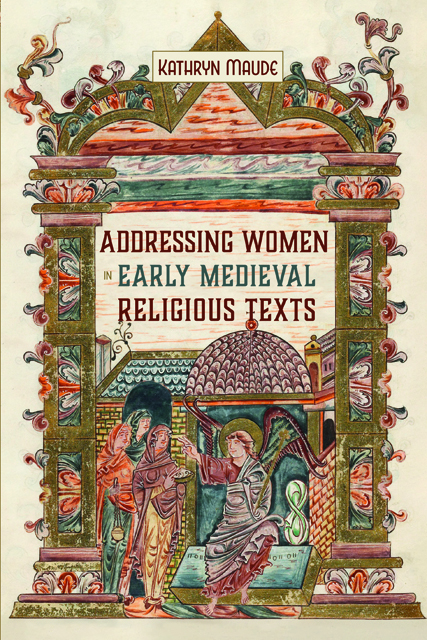Book contents
- Frontmatter
- Dedication
- Contents
- Acknowledgements
- Abbreviations
- Introduction: Behealde ge wif: Addressing Women in Early Medieval England and Scotland
- 1 Addressing Laywomen in Old English Sermons
- 2 Addressing the Recluse in Aelred’s De institutione inclusarum and Goscelin’s Liber confortatorius
- 3 Addressing Holy Women in the Life of Christina of Markyate and the Life of Margaret of Scotland
- 4 Addressing Nuns in Goscelin’s Hagiography for Wilton and Barking Abbeys
- Conclusion: Plebs ecclesiastice discipline: Addressing Women to Include and Exclude
- Bibliography
- Index
- Gender in the Middle Ages
2 - Addressing the Recluse in Aelred’s De institutione inclusarum and Goscelin’s Liber confortatorius
Published online by Cambridge University Press: 14 January 2023
- Frontmatter
- Dedication
- Contents
- Acknowledgements
- Abbreviations
- Introduction: Behealde ge wif: Addressing Women in Early Medieval England and Scotland
- 1 Addressing Laywomen in Old English Sermons
- 2 Addressing the Recluse in Aelred’s De institutione inclusarum and Goscelin’s Liber confortatorius
- 3 Addressing Holy Women in the Life of Christina of Markyate and the Life of Margaret of Scotland
- 4 Addressing Nuns in Goscelin’s Hagiography for Wilton and Barking Abbeys
- Conclusion: Plebs ecclesiastice discipline: Addressing Women to Include and Exclude
- Bibliography
- Index
- Gender in the Middle Ages
Summary
The Liber confortatorius and De institutione inclusarum were both written by men and directly addressed to female recluses whom the writers knew well. Goscelin’s Liber confortatorius has been characterised as rewriting the masculine tradition of anchoritism to make space for women’s spirituality. Aelred’s text, in contrast, has been seen as a problematic and masculinist attempt to impose a male spiritual model on its female addressee. In this chapter, I suggest that this neat distinction breaks down the moment we focus on the overlooked issue of the addressee. By paying attention to how Goscelin and Aelred address the women to whom they speak, we can re-evaluate previous scholarly judgements about the texts’ intimacies. In Chapter 1, I outlined how the default Christian subject in Ælfric’s sermons is male, and women are addressed primarily in order to separate them from the wider Christian community. These sermons are monologic: one-way, hierarchical texts interested in addressing women so that they conform to certain models of Christian behaviour. In the Liber confortatorius and De institutione inclusarum, the nature of the intimate address – from one man to one woman whom he knows well – is similarly at the very heart of what kind of Christian subject position each author makes possible for his addressee. Goscelin addresses Eve monologically, positioning her primarily in relation to himself, whereas Aelred opens up a dialogue with his sister, attempting to locate her in relation to Christ. The imagined intimacy with Eve that Goscelin claims means that he intrudes into her devotional space, centring her reclusive life on himself, whereas Aelred’s pre-existing intimate relationship with his sister creates a dialogue in which she influences his construction of an effective Christian life.
Both the Liber confortatorius and De institutione inclusarum contain instruction on the best way to live life as a recluse. Goscelin of St-Bertin wrote the Liber confortatorius to a woman known as Eve. She was a nun at Wilton Abbey, where Goscelin met her when she was still a child, and they had known each other for around fifteen years when she left to become a recluse at Saint-Laurent du Tertre, a hermitage in Angers. Eve left Wilton without informing Goscelin, and he wrote the Liber confortatorius around 1080 to lament her departure and to encourage her in her new life as a recluse.
- Type
- Chapter
- Information
- Addressing Women in Early Medieval Religious Texts , pp. 53 - 88Publisher: Boydell & BrewerPrint publication year: 2021



